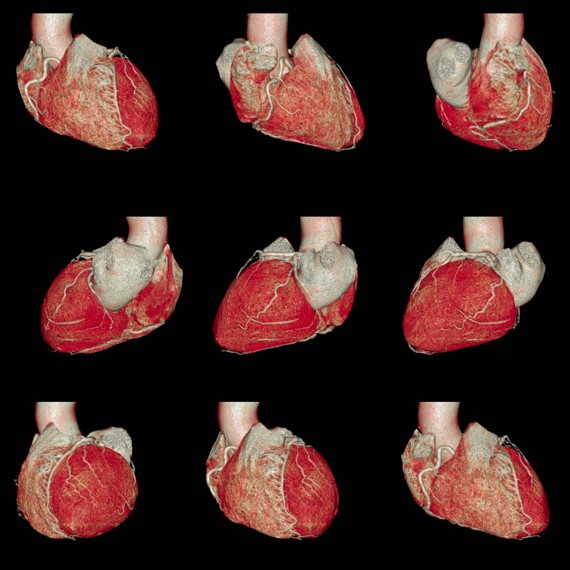A headline reported that “President Trump Has Common Form of Heart Disease,” while a more reserved assessment read, “Trump’s Physical Revealed Serious Heart Concerns, Outside Experts Say.”
No doubt that the health of our chief executive merits special scrutiny. But as a preventive cardiologist, I believe the headlines beg the question: what is disease? The answer is much more than semantic. The implications of who we consider “healthy” and “diseased” are, quite literally, grave.
What Does “Healthy” Mean?
The word “healthy” is often understood as no reason for concern, while “disease” infers serious trouble. When considering the heart, the distinction between healthy and diseased is often arbitrary.
Back to the chief executive, his coronary calcium score (a marker of calcium deposits associated with coronary plaque) was reported to be 133. An ideal score is 0, and cardiac risk tends to increase with the calcium score.
But at the same time, it’s important to point out that in a large study of coronary calcium in asymptomatic U.S. adults, a calcium score of 133 came in at just below the 50th percentile for men age 65-74. In other words, more than 50% of men of his age have even higher calcium scores.
His coronary calcium score is “average.” But average is not good. Not when cardiovascular disease remains the leading cause of death in the United States.
What exactly does it mean to have a disease? Surprisingly, it’s not always clear. The concept of disease is, in many ways, an artificial construct. Pass a certain magic threshold, and you’ve got a disease; just shy of the line, and you’re considered home free. The problem with that way of thinking is that biology does not respect, or even care about, the boundaries of our (mostly arbitrary) diagnostic cut-points.
A More Useful Way to Think About Heart Health
I believe it is far more useful for us to think about our heart status on a continuum, with the vast majority of us somewhere between ideal health and a heart attack. That’s especially true when one considers how common coronary calcium is in U.S. adults—and the fact that most heart attacks arise from arteries with mild narrowing that suddenly crack, like a vascular earthquake. For far too many, the first symptom of heart disease is the last symptom—ever.
I believe our highest priority should be to move beyond labels into action. Action that reflects the truth that we never know when a cardiac disaster will strike. Stress tests, coronary calcium scans, and even angiograms are useful in some circumstances—but the truth is that no test can definitively predict if (and when) someone will have a heart attack. So why not treat every day as if our heart health depended on it and focus on lifestyle choices that stack the deck in our favor?
If you truly believed that a heart attack could be right around the corner, what would your diet look like? Would you find time to be physically active even if you’re busy?
It’s no less urgent to address challenges in diet, physical activity, and stress management the day before a heart attack as it is the day after.
References:
Recent Look at Blood Cholesterol Levels in U.S. Adults
Range of Coronary Calcium Scores in U.S. Adults
Interested in eating better for your own health?
Learn the essentials of good nutrition in our interactive, user-friendly nutrition learning program for the public.
Clinicians: Do you feel confident responding to patient questions about nutrition?
Take our award-winning condensed interactive nutrition CME—and learn what every clinician should know about nutrition.



